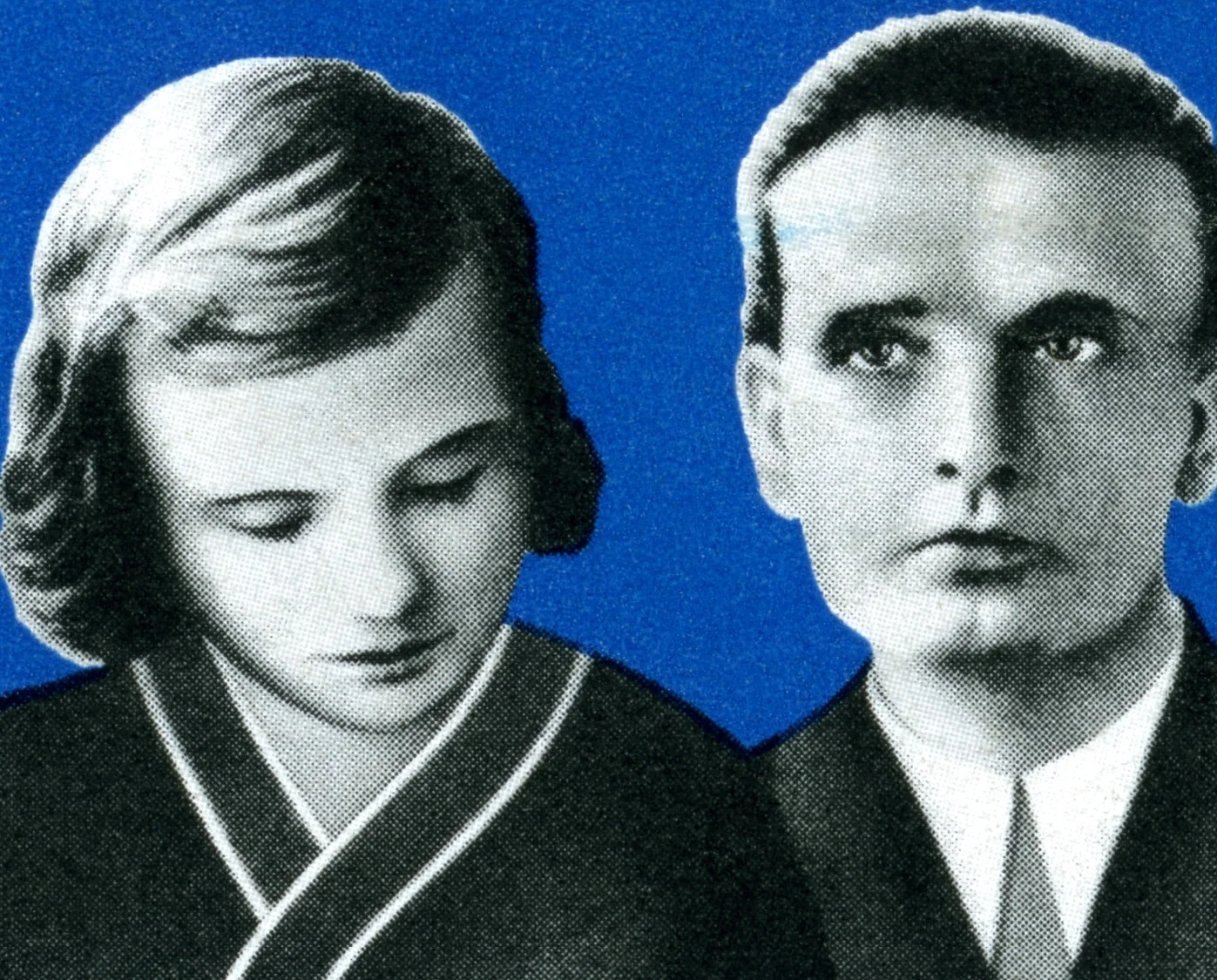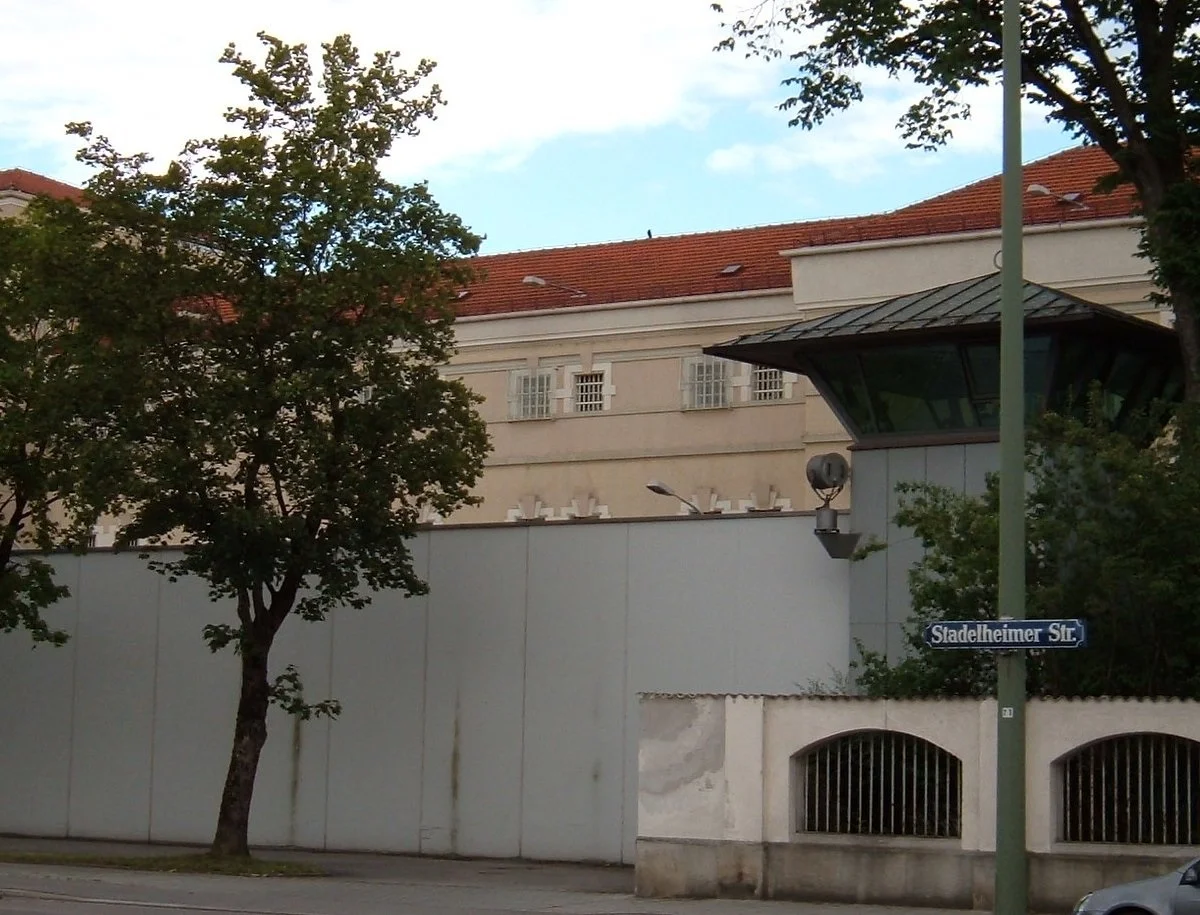71 years ago, the six most recognized members of the German resistance group called the White Rose Group were arrested by the Gestapo and beheaded in 1943. Their crime was for the printing and distribution of leaflets telling the population of Munich about the devastating defeat of the 6th Army at Stallingrad.
The text of their leaflet was smuggled by Helmuth Graf von Moltke out of Germany through Scandinavia to the United Kingdom, In July, 1943, copies of it were dropped over Germany by Allied planes, retitled “The Manifesto of the Students of Munich”.
Another member, Hans Conrad Leipelt, who helped distribute Leaflet 6 in Hamburg, was executed on January 29, 1945, for his participation.
Now, 71 years later, the guillotine used to carry out the gruesome sentence has been found gathering dust in the basement of the Bavarian National Museum in Munich triggering a debate in Germany about whether it should go on show, or remain locked out of sight forever.
A museum spokesman said the machine had been locked away decades ago because it was deemed too macabre to put on display.
Helga Puhlmann, a spokeswoman for the Bavarian National Museum, said the guillotine was among five wooden benches and one metal guillotine mechanism that had landed in the museum’s collection after being handed over by Bavarian justice authorities in the early 1970s.
Ms. Puhlmann said earlier rumors that the guillotine had been dumped in the Danube towards the end of World War II were not true. Instead, the guillotine — of a type used in Germany in the 19th century and revived for broader use under the Nazis — was taken from the Munich jail where the Scholls and hundreds of others were executed and taken first to nearby Straubing, she said.

The exact origin of the guillotine is “not totally clear, but there are several indications” that it was the instrument used to behead the Scholls, including modifications that were the hallmark of Johann Reichhart, a public executioner in the Nazi era, she said.
How the “historically significant” instrument is now treated, and whether it can be exhibited at all to the public, is a matter “for the utmost sensitivity and reverence,” she added.
Sybe Wartena, a senior curator at the Bavarian National Museum,said that rumours about the guillotine had circulated for years. When he took up his post 18 months ago, Mr. Wartena said, he urged a hasty examination. “We are now pretty certain that it is the guillotine used to kill Hans and Sophie Scholl,” discounting the rumours that the guillotine had been thrown in the Danube.
Hans and Sophie Scholl were, two of the youngest members of the group who dared to challenge the world’s most sinister tyranny and paid the ultimate price in doing so.
Opposing the Nazi party was a very dangerous path to take. The government or rather, the Nazi party – controlled everything: the news media, arms, police, the armed forces, the judiciary system, communications, travel, all levels of education from kindergarten to universities, all cultural and religious institutions. Political indoctrination started at a very early age, and continued by means of the Hitler Youth with the ultimate goal of complete mind control. Children were exhorted in school to denounce even their own parents for derogatory remarks about Hitler or Nazi ideology.
It was ironic that both the Scholls should die at the hands of the Nazi regime. When the Nazis began their climb to power Hans and Sophie were as enthusiastic as everyone else in the ‘New Germany’ about the movement which promised to restore the nation to greatness. However, they very quickly saw the true colours of the evil that lay behind the veneer of Nazi ideology.
As time went on, Sophie became increasingly disillusioned with the Nazis According to her sister Elizabeth on the day before England declared war in 1939. As both went with her for a walk along the Danube her sister said : “Hopefully there will be no war”. ‘And she replied “Yes, I hope there will be. Hopefully someone will stand up to Hitler.”
While attending Munich University they became involved with other students and lecturers that eventually became the White Rose Movement, a symbol of German resistance to Hitler and the Nazis.
The group was motivated by ethical and moral considerations and was heavily influenced by the experience of a number of members while at the Eastern Front.
In 1941 Hans Scholl read a copy of a sermon by an outspoken critic of the Nazi regime, Bishop August von Galen, decrying the euthanasia policies which the Nazis maintained would protect the German gene pool.
Horrified by these Nazi policies, Sophie obtained permission to reprint the sermon and distribute it at the University of Munich as the group’s first leaflet.
By 1942, many of the male medical students at the University of Munich were obliged to serve a three-month stint on the Russian front. The idea was to send all medical students to the Russian front for a period of three months in order for them to experience the rendering of medical care under fire, and to work as physician assistants in field hospitals.
It was here they witnessed the horrors of war and the unbelievable cruelty the Germans displayed to the Jews. They personally observed beatings and other mistreatment and heard reliable stories of the persecution of the Jews then in full swing. Some witnessed atrocities of the war on the battlefield and against civilian populations in the East. When the students returned from the front they rejected fascism and militarism and believed in a federated Europe that adhered to principles of tolerance and justice.
From that time onwards, the group actively engage in a war of disinformation against the Nazi and the direction they were leading Germany towards. A key element of their campaign was the leaflet distribution exposing the actions and propaganda of the Nazi,
In total they made six anti-war/anti-Nazi leaflets, which were distributed in public. Members also engaged in an active anti-Nazi graffiti campaign within Munich.
One of the leaflets entitled “Passive Resistance to National Socialism” was aimed to encourage more people who had similar views to the group to engage in resistance to the Nazis.
“Many, perhaps most, of the readers of these leaflets do not see clearly how they can practise an effective opposition. They do not see any avenues open to them. We want to try to show them that everyone is in a position to contribute to the overthrow of the system. It can be done only by the cooperation of many convinced, energetic people – people who are agreed as to the means they must use. We have no great number of choices as to the means. The only one available is passive resistance. The meaning and goal of passive resistance is to topple National Socialism, and in this struggle we must not recoil from any course, any action, whatever its nature. A victory of fascist Germany in this war would have immeasurable frightful consequences. We cannot provide each man with the blueprint for his acts, we can only suggest them in general terms. Sabotage in armaments plants and war industries, at all gatherings, rallies and organisations of the National Socialist Party, convince all your acquaintances of the hopelessness of this war and urge them to passive resistance.”
The leaflets caused a sensation, and the Gestapo began an intensive search for the publishers. On the nights of the 3rd, 8th and 15th of February 1943, the slogans “Freedom” and “Down with Hitler” appeared on the walls of the university and other buildings in Munich.
The final leaflet was called “To the fellow fighters in the resistance”, which was written in February 1943, after the German defeat at Stalingrad and resulted in the group being captured. It was designed to inform the population of the shattering defeat of the German armies at Stalingrad.
“The day of reckoning has come – the reckoning of German youth with the most abominable tyrant our people have ever been forced to endure. We grew up in a state in which all free expression of opinion is ruthlessly suppressed. The Hitler Youth, the SA, the SS have all tried to drug us, to regiment us in the most promising years of our lives. For us there is but one slogan: fight against the party. The name of Germany is dishonoured for all time if German youth does not finally rise, take revenge, smash its tormentors. Students! The German people look to us.”
On 18 February 1943, coincidentally the same day that Nazi propaganda minister Goebbels called on the German people to embrace total war, the Scholls brought a suitcase full of leaflets to the university. Here they decided to drop copies from the top of the staircases for students to find when they came out of lectures. However, they had copies remaining and decided to return to the atrium and climb the staircase to the top floor.
They then threw the remaining leaflets into the air. Unfortunately their actions were observed by the custodian Jakob Schmid who was also a Gestapo informant. The secret police were informed and both were taken into Gestapo custody.
After brutal interrogation by the Gestapo chief interrogation specialist both confessed to their involvement but refused to implicate their fellow members. However, after further torture they were broken.
The Scholls stood trial before the Volksgericht, the feared People’s Court that tried political offenses against the Nazi German state on 22 February 1943. They were found guilty of high treason and Roland Freisler, a rabid Nazi and head judge of the court, sentenced them to death.
Sophie was defiant standing in front of the court “You know as well as we do that the war is lost. Why are you so cowardly that you won’t admit it?”
Found guilty of high treason they were executed the same day by guillotine at Stadelheim Prison.

They both went to their deaths bravely, with Hans shouting “Let freedom live” just before he was beheaded by the guillotine. Sophie Schol was executed by the same manner shortly afterwards. Her last words are disputed either, “your heads will fall as well” or “you are my refuge into eternity”.
Today, the members of the White Rose are honoured in Germany among its greatest heroes, for opposed the Third Reich in the face of almost certain death.
This is why the discovery of the actual guillotine that executed the key members of the main German resistance movement has stirred a heated debate within Germany. Should it become a symbol of the sacrifice of these brave individuals in the face of overwhelming evil? Or should it remain hidden from public as too macabre?
Franz Josef Mueller, who at 89 is the last surviving member of the White Rose group, said: ‘No, this should not go on display. ‘No entertainment must be made of their violent deaths.
‘The memory of Sophie and Hans is deep within me. I think of them every day.’
Bavaria’s arts minister Ludwig Spaenle said: ‘One must proceed with great sensitivity and reverence. One cannot decide what to do with this overnight.’
However Dr. Newborn, the American expert on White Rose, called the find “really remarkable” and of great significance in modern Germany, where the story of the Scholls is widely known and used to reinforce the message that Nazi crimes should never be repeated and that civil courage and resistance are important.
Header Image Credit : BAYERISCHES NATIONAL MUSEUM





